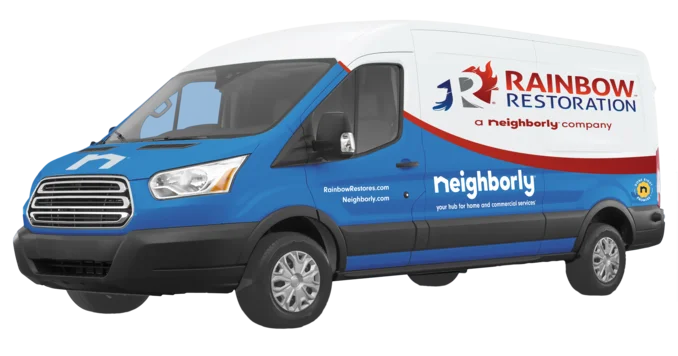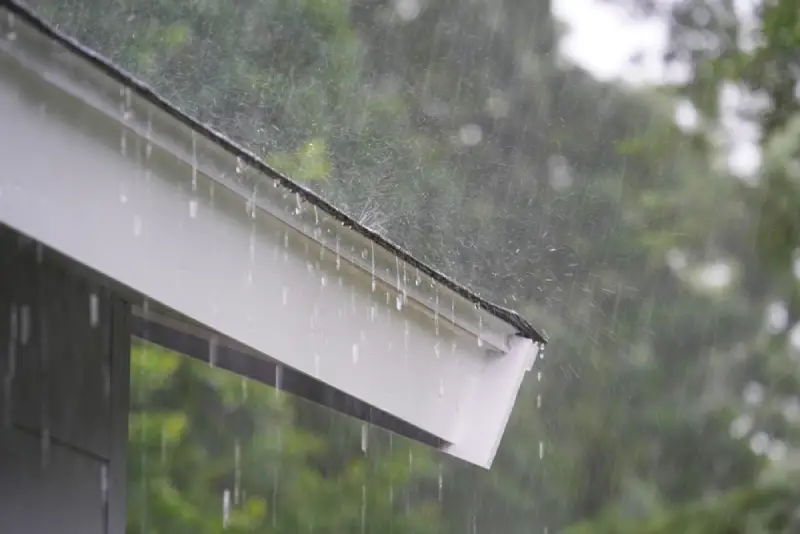
Rainbow Restoration® experts share primary fall weather hazards and preparation tips:Common structural hazards caused by autumn weather include:
How to prepare for fall weather:
For damage restoration from severe fall weather events, including water, fire, or mold, contact a certified professional like Rainbow Restoration for 24/7 emergency services. |
Autumn brings a beautiful but potentially dangerous shift in weather patterns. For property owners, the idyllic sights of the season are a reminder to prepare for challenging fall weather conditions ahead of time, lessening exposure to potential structural damage.
Understanding common patterns and adopting proactive autumn weather safety measures is the best defense against unexpected costs. In this guide, Rainbow Restoration explains the primary weather-related risks of the season and provides essential fall weather safety tips to help protect your investment.
- When Does Fall Weather Start?
- Common Fall Weather Conditions and Property Risks
- Fall Weather Safety Tips for Property Protection
- The Rainbow Restoration Advantage
- Fall Weather Events: Preparation & Restoration FAQ
When Does Fall Weather Start?
The shift to fall weather is a gradual process. The official start of autumn is the autumnal equinox, which usually falls in late September. However, practically speaking, the beginning of September often marks the onset of fall weather.
Regardless of the official calendar date, the period from September through November is a meteorological transition zone characterized by increasing unpredictability. Temperatures become cooler and more volatile, and summer weather patterns give way to more intense storm systems.
These changing fall weather conditions set the stage for property damage. While August has traditionally seen the most expensive weather events in the U.S., changing climate patterns can lead to late-season storms that catch property owners unprepared.
Common Fall Weather Conditions and Property Risks
While many associate fall with mild temperatures and crisp air, it can also include severe events that put homes and businesses at risk. The primary hazards associated with weather in the autumn season include:
High winds and severe storms
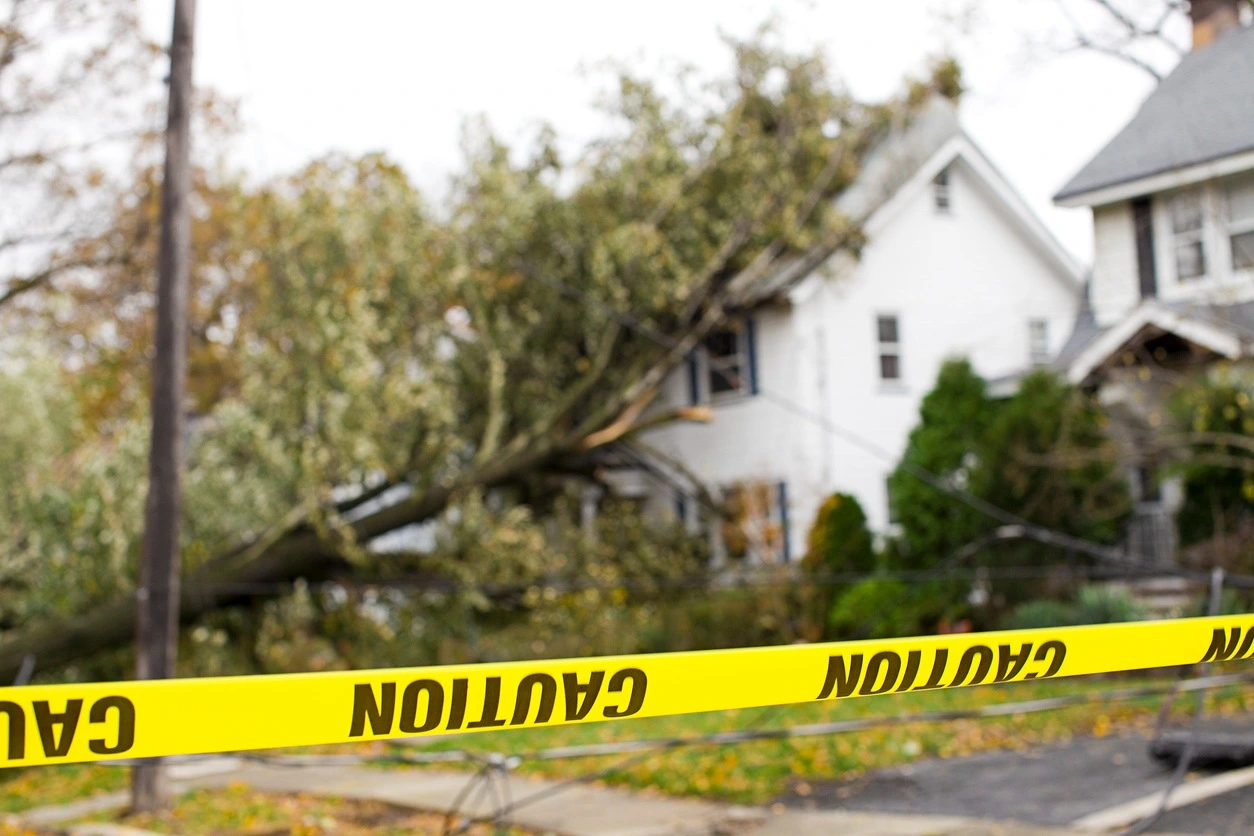
Fall weather often means an increase in convective storms, which can produce powerful winds, hail, and even late-season tornadoes or the remnants of tropical systems.
Dangers to property include:
- Wind damage: Strong winds are notorious for tearing off loose or damaged shingles, siding, and flashing, compromising your roof's integrity. They can also turn unsecured items like patio furniture or trampolines into dangerous projectiles that break windows or damage exterior walls.
- Fallen trees and limbs: As trees begin to dry out in late summer, dead or weak limbs become vulnerable to wind stress. A large branch falling on your roof can cause immediate, catastrophic structural damage.
Heavy rain, clogged gutters, and water intrusion
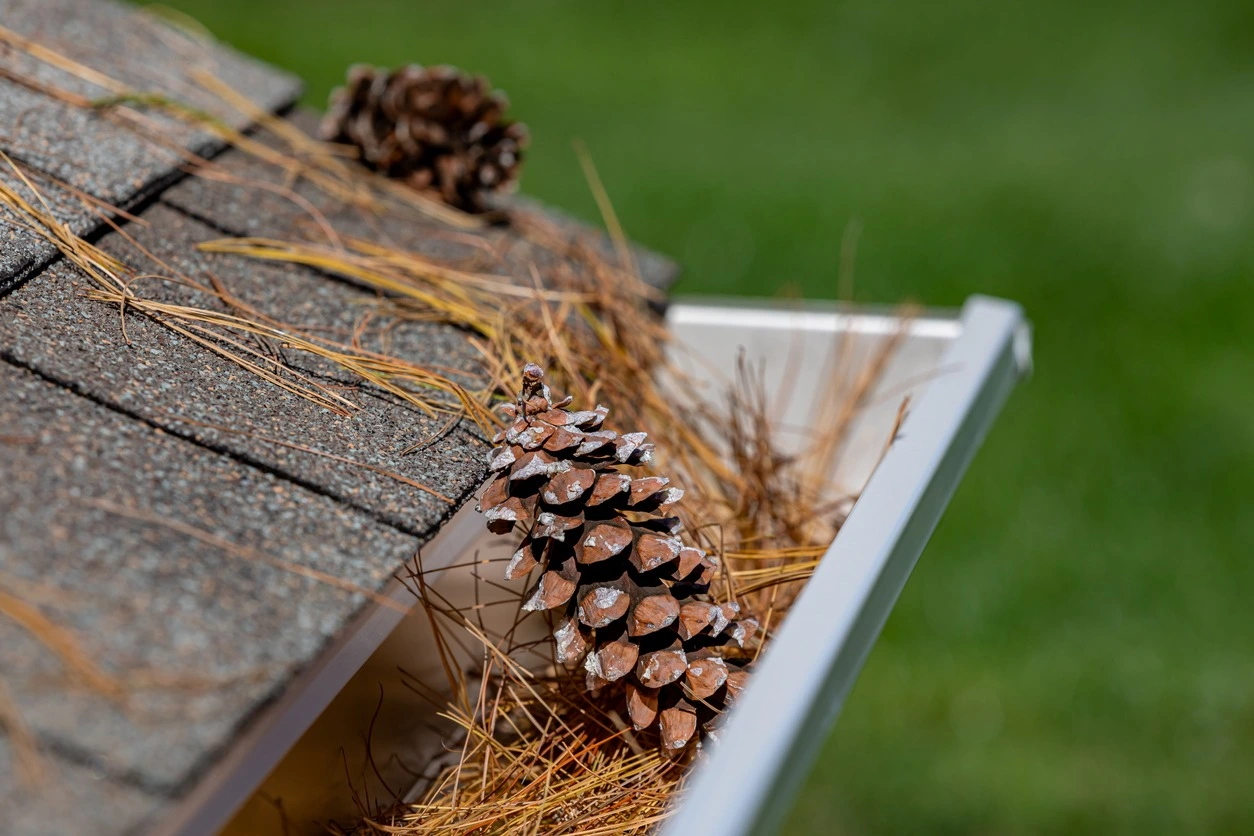
Water damage is a significant hazard associated with fall weather conditions, with the risk often exacerbated by fallen leaves and other debris.
Dangers to property include:
- Gutter clogs and overflow: Fallen leaves are often washed into gutters and downspouts, creating blockages. The resulting overflow can lead to water seepage, damaging fascia boards, staining exterior walls, and even leaking directly into the attic or basement.
- Foundation issues: Continuous overflow near the base of your property can saturate the soil, increasing hydrostatic pressure against the foundation and potentially leading to basement leaks or cracks.
- Late-season hurricanes and tropical storms: Autumn overlaps with hurricane season for homes and businesses along the Gulf and East Coasts, presenting risks of flash flooding and severe surge damage.
Early freezes and freeze-thaw cycles
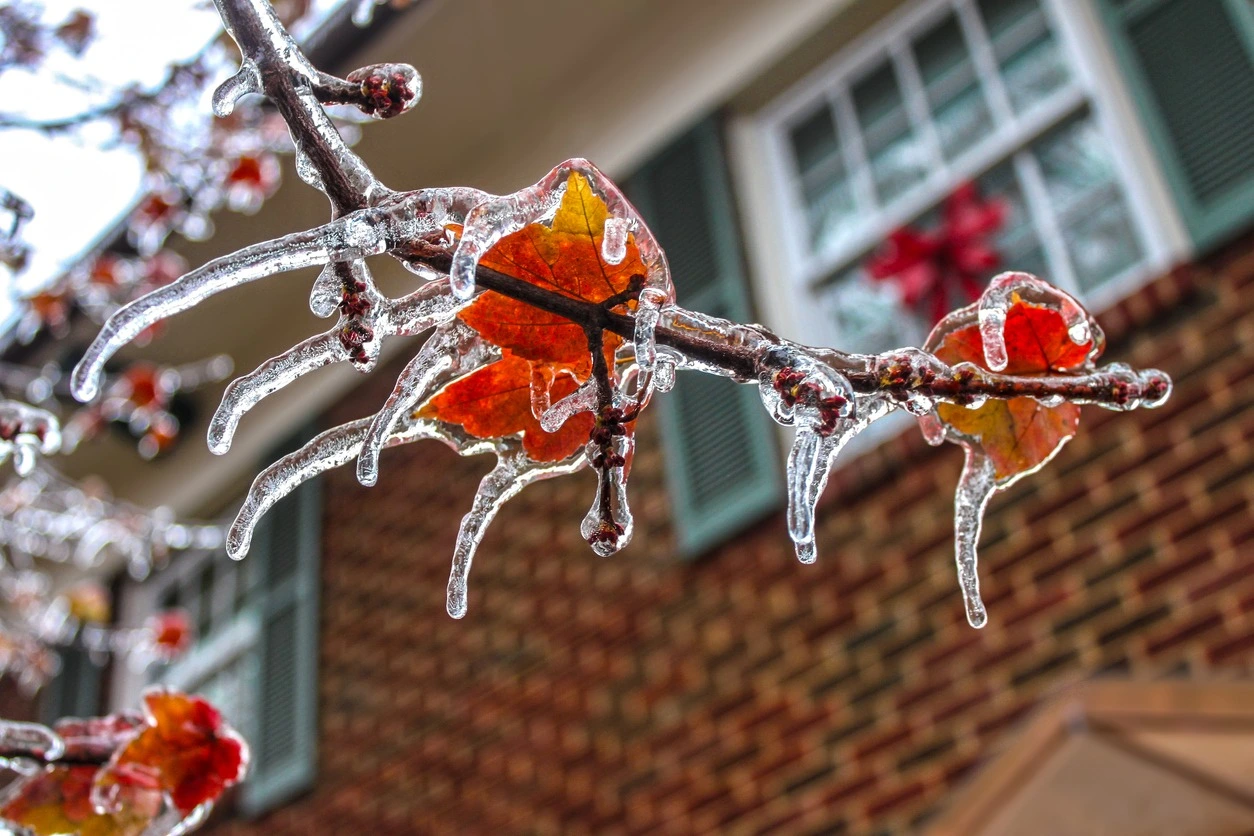
Even before winter frost sets in, fall weather can bring unexpected dips in overnight temperature that lead to premature freezing.
Dangers to property include:
- Freezing pipes: Exterior water sources, like hose bibs and sprinkler systems, that haven't been properly drained and shut off are vulnerable to freezing. When water freezes, it expands, causing pipes to burst. Once the pipes thaw (often unnoticed), significant water damage can occur.
- Ice dam precursors: Trapped water from clogged gutters can freeze in late fall, expanding and pushing against the roof structure—a dangerous precursor to the ice dams of winter.
Fire hazards from heating systems
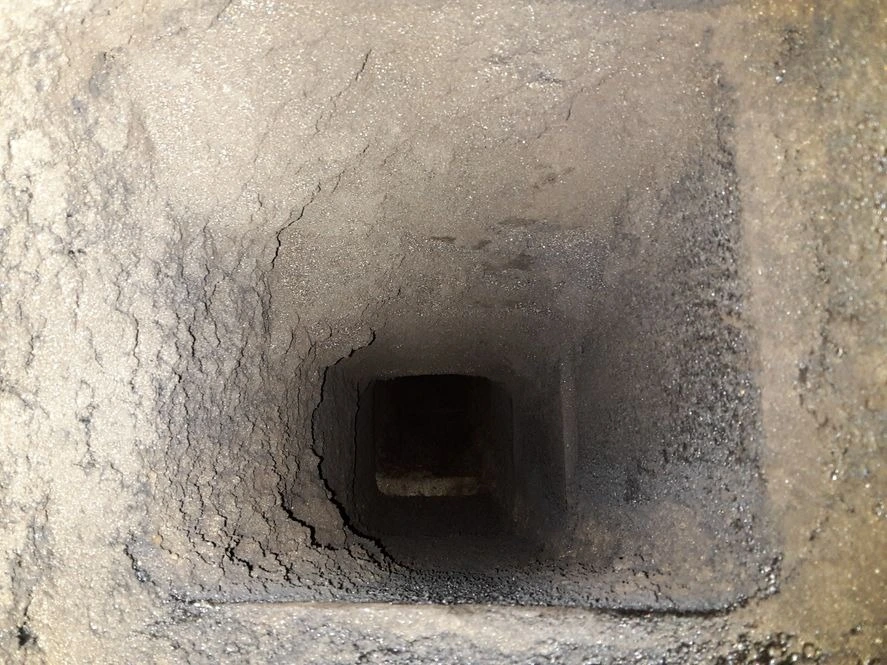
As the outdoor temperature drops, dormant heaters and furnaces see more use. Applying proactive fall weather safety tips can help property owners avoid disasters related to indoor heating.
Potential property risks include:
- Creosote buildup: Fireplaces and wood stoves should be inspected and cleaned to remove any creosote accumulation. Creosote is a highly flammable residue that significantly increases the risk of a chimney fire.
- Furnace malfunctions: Furnaces that haven't been serviced since the previous winter can malfunction, leading to a fire hazard. Furthermore, the use of space heaters requires extreme caution, as they are a leading cause of residential fires.
Fall Weather Safety Tips for Property Protection
Preparation is the cornerstone of autumn weather safety. Preventative steps now can reduce the impact of a weather-related disaster later.
Preparing the exterior for fall weather
The changing season demands exterior readiness. Follow these steps to safeguard your property's exterior against the challenges of unpredictable fall weather.
- Clear and secure gutters. Before heavy rains arrive, clear all leaves and debris from your gutters and downspouts to facilitate proper water flow. Consider installing leaf guards for easier maintenance.
- Inspect the roof. Check for any missing, cracked, or loose shingles that could allow water intrusion. Learning the signs of roof storm damage can help identify areas of concern.
- Trim trees and prune limbs. A landscaping professional should inspect and prune any trees, especially those overhanging the home or business. Remove any dead, diseased, or weakened branches that could fall during high winds.
- Disconnect and drain exterior hoses. Turn off the water supply to all outdoor spigots and drain the hoses to prevent freezing and burst pipes. Have irrigation systems professionally winterized (blown out) before the first hard freeze.
- Secure loose items. Store or tie down any outdoor furniture, planters, yard decorations, or equipment that could become wind-borne projectiles.
Preparing the interior for fall weather
Don't overlook interior safety! As temperatures drop, a few indoor maintenance steps can help protect homes and businesses and facilitate a smooth transition into cooler fall weather.
- Service heating systems. Schedule an annual inspection and cleaning for furnaces, boilers, chimneys, and fireplaces. Replace furnace filters before the first use of the fall season.
- Check safety alarms. Test all smoke and carbon monoxide detectors and replace the batteries. Increased heating system use requires vigilance against carbon monoxide (CO) poisoning.
- Insulate vulnerable pipes. Apply foam pipe insulation to any exposed pipes in unheated areas, such as attics, basements, or crawl spaces, to protect them from early freezing.
- Inspect for cracks and gaps. Walk around the inside of the property and check for cracks around windows, doors, and the foundation. Apply fresh caulking or weatherstripping to seal any gaps that could allow cold air, moisture, or pests inside.
The Rainbow Restoration Advantage
Even with the best preparation, severe fall weather can strike without warning. In the event of water damage from storm flooding, fire or smoke damage from a chimney malfunction, or mold growth from an unaddressed leak, Rainbow Restoration is ready to help.
Our certified professionals provide rapid response commercial and residential restoration services. We understand the urgency of these situations and work quickly to mitigate damage and restore homes and businesses to their best possible condition following a disaster.
Call your local Rainbow Restoration team for expert water, fire, and mold damage restoration. Rainbow Restoration offers 24/7 emergency services designed to address fall weather-related property damage promptly.
This article is intended for general informational purposes only and may not be applicable to every situation. You are responsible for determining the proper course of action for your home and property. Rainbow Restoration is not responsible for any damages that occur as a result of this blog content or your actions. For the most accurate guidance, call the Rainbow Restoration location nearest you for a comprehensive, on-site assessment.
Fall Weather Events: Preparation & Restoration FAQ
Setting the highest standards in water, fire, and mold damage restoration requires a continuous dedication to education and improvement. This commitment to exceptional service also includes using our years of experience and expertise to answer your restoration questions. Here are answers to some of the most frequently asked questions about fall weather preparedness.
Can clogged gutters cause property damage?
Yes, clogged gutters force rainwater to overflow and pool near the structure’s foundation or seep behind siding and fascia. Leaves, pine needles, and other fall weather debris can further block the flow of water, potentially risking basement flooding and wood rot.
Schedule at least two gutter cleanings in autumn—once after most of the leaves have fallen and another before the first deep freeze.
Does my home insurance cover common fall weather conditions damage, like fallen trees?
Most standard homeowner's insurance policies cover sudden and accidental damage caused by fall weather events such as wind, hail, and damage from falling trees.
However, coverage can vary, and flood damage typically requires a separate policy. Understanding your coverage is part of a comprehensive autumn weather safety plan.
What is the biggest fire risk associated with the autumn weather?
Poorly maintained heating equipment poses the most significant fire risk during the fall weather transition. As furnaces, fireplaces, and wood stoves are put back into regular use, a dirty chimney or malfunctioning furnace can lead to house fires or carbon monoxide leaks.
One of the best fall weather safety tips is to schedule a seasonal professional inspection for all heating systems before you use them.
How can I tell if I have a mold problem caused by fall weather conditions?
Mold often results from hidden water intrusion caused by heavy rainfall or clogged gutters. Signs of a mold problem include a persistent musty odor, visible growth on walls or ceilings, or unexplained symptoms like coughing or sneezing indoors.
Mold can spread in as little as 24–48 hours after a water event, so a rapid response is critical. If you suspect hidden water damage after heavy weather in the autumn season, contact Rainbow Restoration immediately for an inspection by an expert in mold remediation.
What's the best way to prepare my outdoor faucets for the first freeze of fall weather?
Follow these steps to prevent a pipe burst from freezing fall weather conditions:
- Disconnect and store all garden hoses.
- Locate the shut-off valve for the outdoor faucet (typically in a basement or crawl space) and turn it off.
- Open the outdoor faucet to drain any remaining water from the pipe section.
These simple steps flush the system, leaving no water to freeze and crack the pipe.
